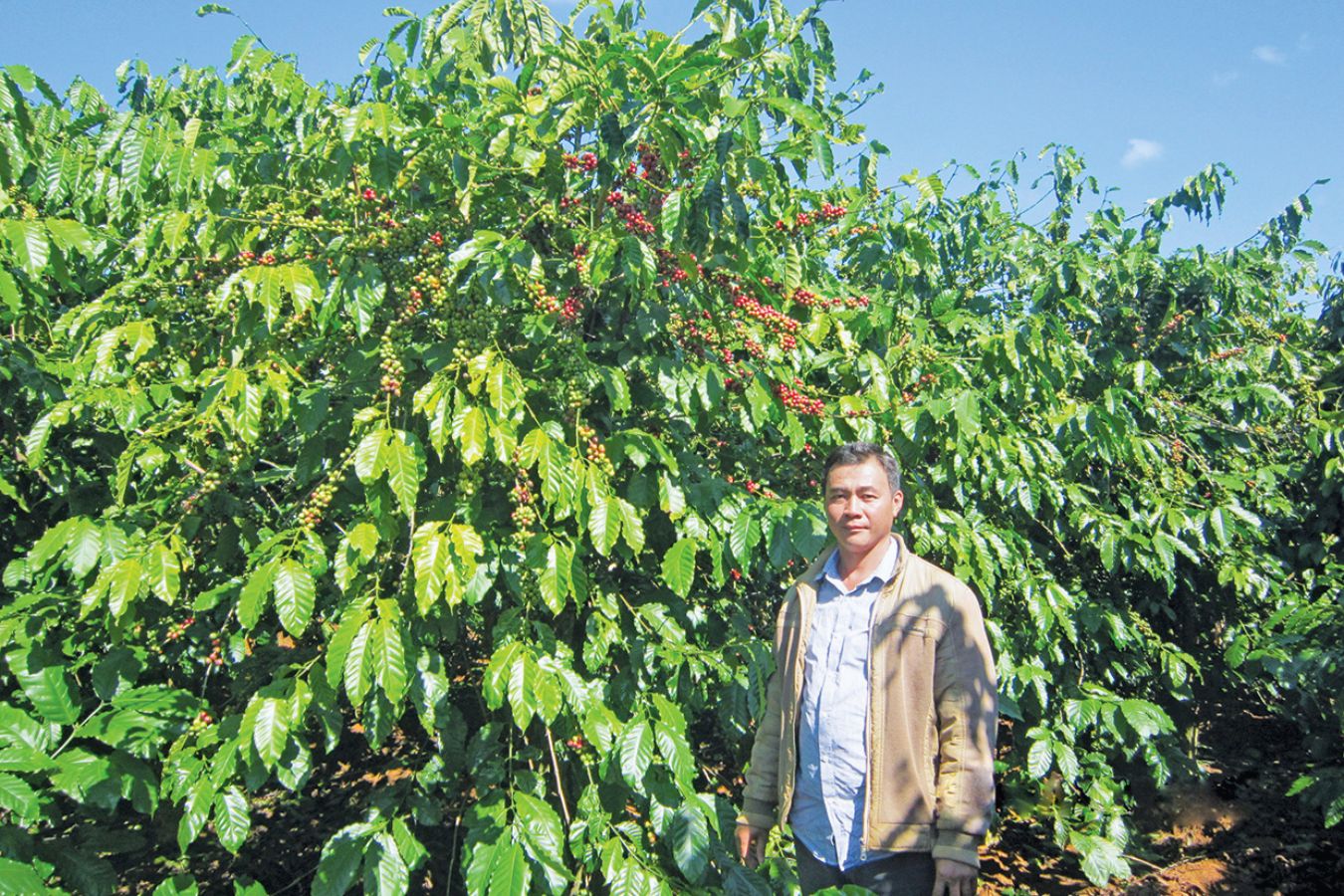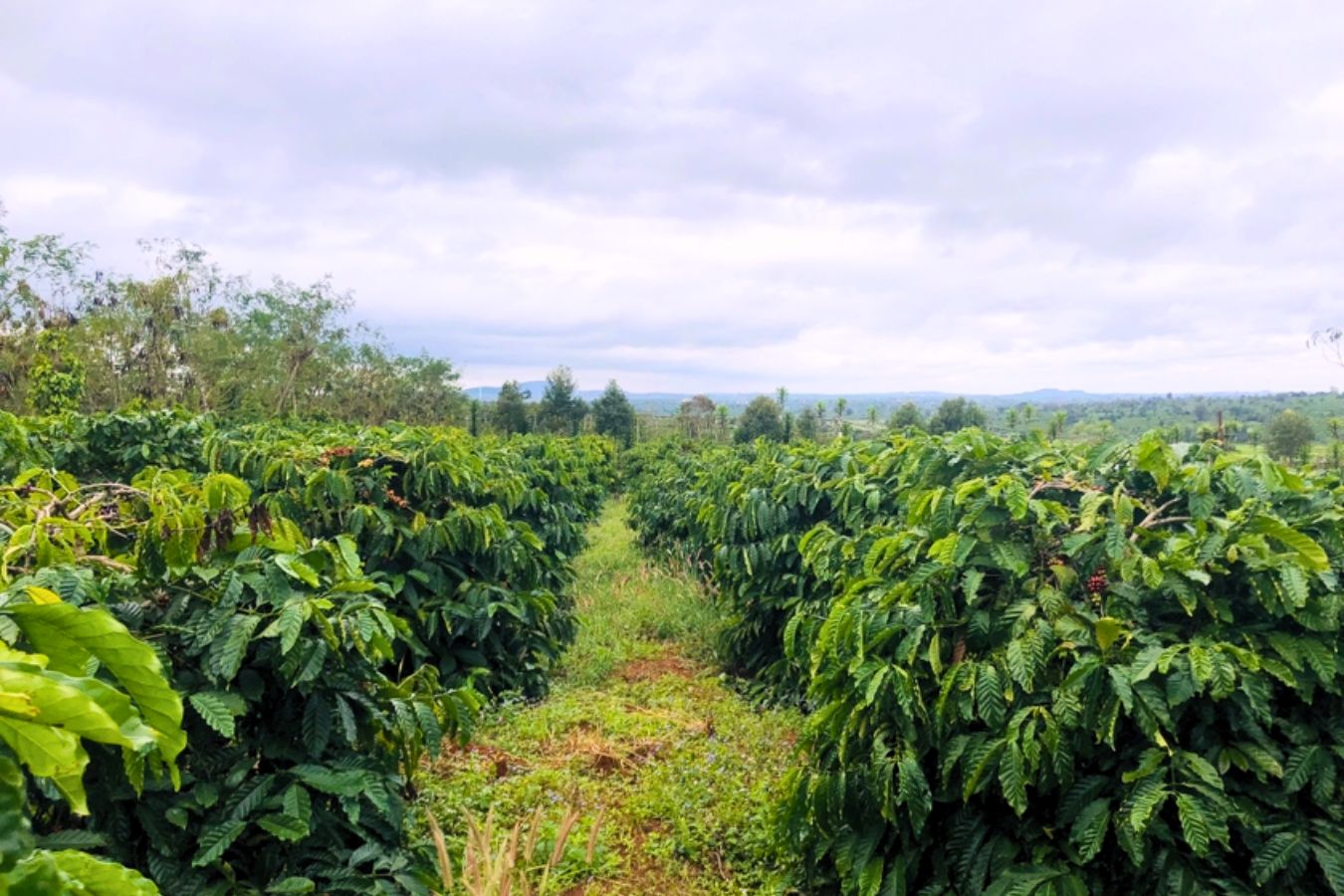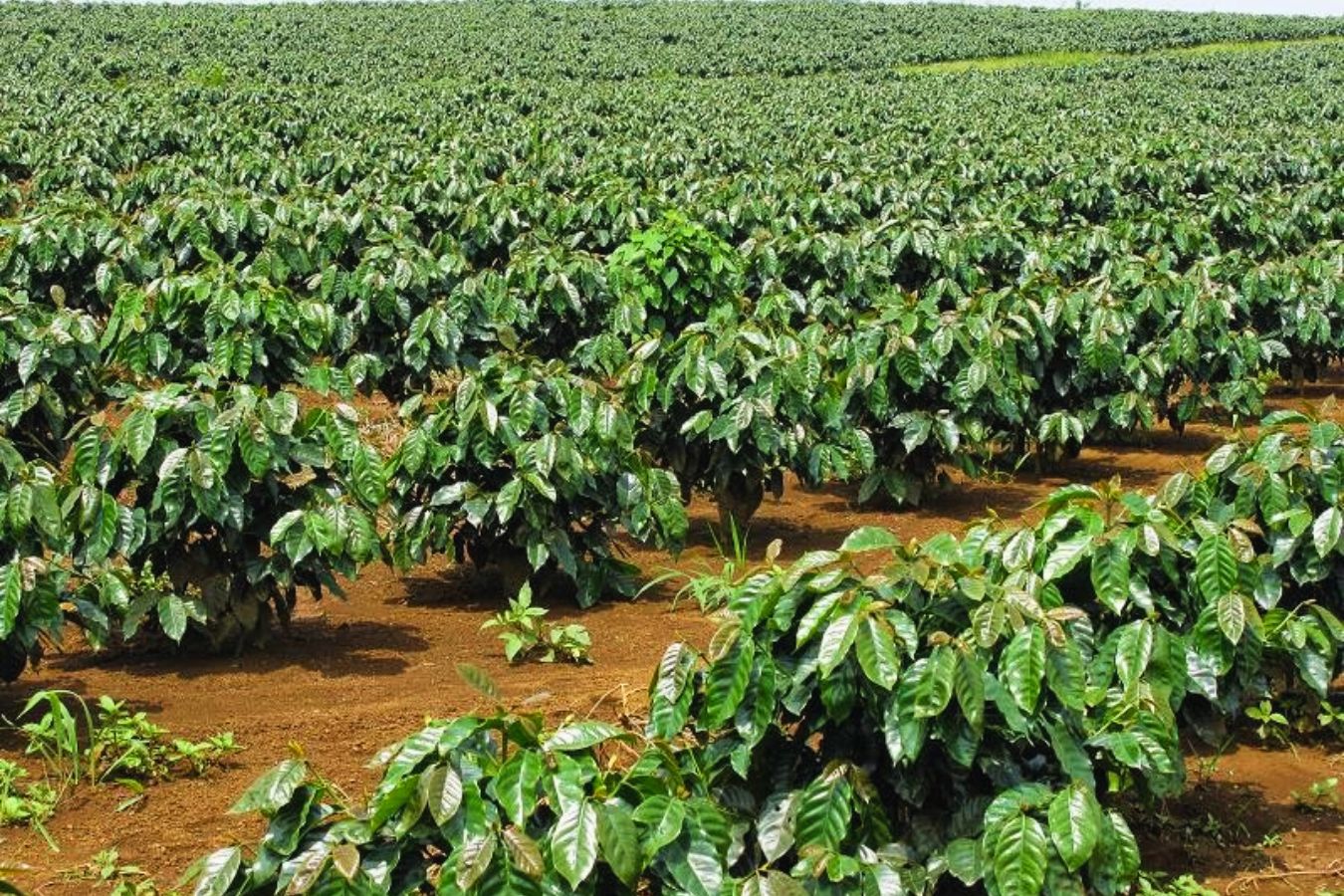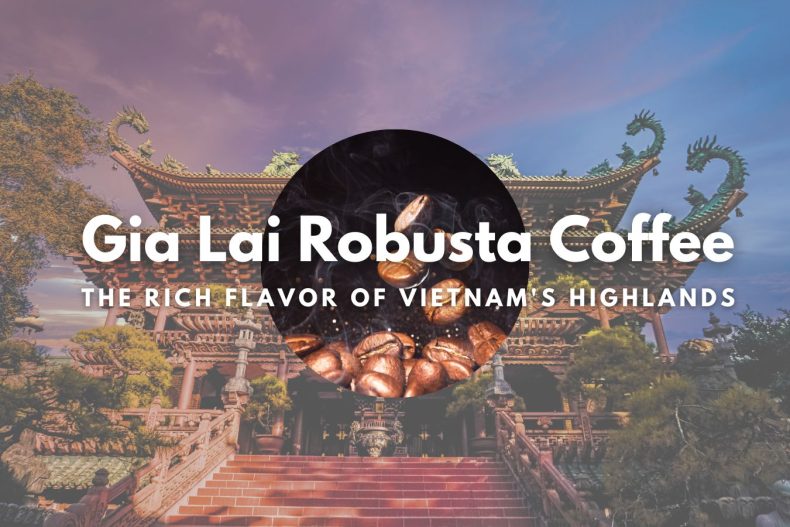
If you’re a coffee lover, you may have heard of famous coffee-growing regions like Colombia, Ethiopia, or Brazil. However, one gem of the coffee world often overlooked is Gia Lai, a province in Vietnam’s lush central highlands. Gia Lai is renowned for its exceptional coffee plantations cultivating the finest coffee beans for generations. In this article, we’ll delve into the captivating world of Gia Lai coffee plantations, exploring their rich heritage, distinctive flavors, sustainable practices, and cultural significance.
The Rich Heritage of Gia Lai Coffee Plantations
The History of Gia Lai Coffee
Gia Lai’s coffee-growing history traces back to the French colonial era in the late 19th century when coffee was first introduced. Since then, Gia Lai has become one of Vietnam’s premier coffee-growing areas, renowned for its high-quality Arabica and Robusta coffee beans. The region’s unique climate, fertile soil, and dedication to coffee cultivation have contributed to its reputation as a coffee lover’s paradise.
From the late 70s and early 80s of the last century, Robusta coffee (coffee with jasmine) took root in Gia Lai. Although grown after Arabica coffee (tea coffee) and Liberica (jackfruit coffee), Robusta coffee, with its suitability to the soil and climate of the Gia Lai plateau, should rapidly increase in size and yield. Outstanding productivity, ranking first and second in the Central Highlands region, annually contributing significant output to Vietnam’s coffee export activities.
Gia Lai has mainly contributed to Vietnam’s Robusta coffee export industry with large coffee reserves. As of 2019, the total coffee growing area in Gia Lai is 97,200 hectares, in which, Robusta coffee accounts for nearly 94,000 hectares with an average output of 15–20 tons/ha. The localities that grow Robusta coffee in Gia Lai include Chu Se, Dak Doa, Ia Grai, and Chu Prong.

Dak Doa has up to 27,000 hectares of coffee cultivation land – accounting for 55% of agricultural land, with an average output of 70,000 tons of green coffee/per year. Coffee trees also provide the primary source of income for many farmers and help the district’s economic situation develop stably. The quality of Gia Lai’s Robusta coffee is also appreciated by its unique caffeine content. In particular, the taste of coffee at Chu Se and Dak Doa is more potent than coffee at Ia Grai, Chu Prong.
Like other localities in the Central Highlands, Gia Lai people face many obstacles in coffee cultivation due to erratic weather. Although the 2020 crop year has not ended, many farmers reported a sharp decrease in coffee productivity compared to previous years. Every year, an average of 18–20 tons of fresh coffee is harvested per hectare, but only 12–13 tons/ha are harvested this year.
The biggest reason is that the rainy season comes late, with little rainfall, but some storms make farmers unable to care for crops. As a perennial coffee growing area, the amount of old land that needs to be rehabilitated in Gia Lai is not tiny. Although 97,200 hectares of coffee land, only 83,200 hectares are in business; the rest is being replanted. Moreover, coffee growing and processing techniques in Gia Lai are not high.
Farmers still use outdated farming methods, using many chemicals and pesticides, affecting the yield and quality of coffee. The Gia Lai Robusta coffee brand has not been positioned in the market, although the quality is not inferior to coffee from other localities and countries. The biggest reason is that exported coffee is raw material, not branded. This also makes the price of coffee here not high, lack of competition.
Unique Characteristics of Gia Lai Coffee
Gia Lai’s coffee beans possess distinct characteristics that set them apart from other varieties. Combining the region’s favorable geographical features and cultivation methods yields coffee with exceptional flavors, aroma, and body. The careful selection of coffee varietals, meticulous harvesting techniques, and the dedication of local farmers all contribute to the unique qualities found in Gia Lai coffee.
The Coffee Cultivation Process in Gia Lai
Gia Lai’s coffee cultivation process is a labor of love, requiring expertise, patience, and attention to detail. From nurturing coffee seedlings to hand-picking ripe cherries, the farmers in Gia Lai follow a meticulous process to ensure the highest quality coffee beans. They employ traditional and sustainable methods, respecting the natural environment while producing exceptional coffee.
Exploring the Flavor Profile of Gia Lai Coffee
Aromatic Notes and Fragrance
Gia Lai coffee delights the senses with its captivating aroma and complex flavor profile. The beans emit a rich, earthy fragrance with hints of floral, fruity, and chocolate notes. The enticing scent of freshly brewed Gia Lai coffee creates an anticipation that intensifies with each sip.
Distinctive Taste Profile
When it comes to taste, Gia Lai coffee offers a remarkable experience. The flavor profile varies depending on the specific coffee bean variety, but you can expect a harmonious balance of sweetness, acidity, and bitterness. The coffee’s smooth and velvety texture dances on the palate, leaving a lingering aftertaste that is both satisfying and memorable.
Gia Lai coffee has a strong aroma. , natural flavor, pure, slightly harsh taste, not sour. Smelling unroasted coffee will smell like fresh peanuts, while roasted pure coffee will have a faint aroma. If the ripening is uniform, the product will have a beautiful color, like chocolate. Mainly, Robusta coffee grown in Gia Lai has a high caffeine content superior to other places.
Popular Brewing Methods for Gia Lai Coffee
Choosing the correct brewing method is essential to appreciate Gia Lai coffee’s flavors fully. Many coffee enthusiasts prefer using the French press or pour-over techniques to showcase the coffee’s unique qualities. These methods allow the rich oils and tastes to be fully extracted, resulting in a cup of coffee that embodies the essence of Gia Lai’s coffee plantations.
Sustainable Practices in Gia Lai Coffee Plantations
Coffee is an essential export item of Gia Lai province. However, building a coffee brand methodically associated with geographical indications is necessary to increase added value.
Exceptionally high caffeine content
Most of the coffee grown in Gia Lai belongs to the Robusta variety. Robusta coffee has 2 lines: Robusta, pure root, small but firm, heavy, and rich in quality; The other line is high-yielding Robusta with high yield and good resistance to pests and diseases, but the quality is not as good as the shared Robusta line.
In the 2019-2020 crop year, the province has 603,500 hectares of the coffee business, the average yield is 2.74 tons/ha, and the output is more than 1.64 million tons, ranking fourth in the country (after the provinces: Dak Lak), Lam Dong and Dak Nong).
According to Organic standards, Helena Coffee Vietnam is investing in producing 450 hectares of coffee. In addition, the company cooperates with nearly 4,000 households to build a coffee production area according to 4C standards with an area of almost 5,000 hectares in the districts of Dak Doa, Chu Se, Chu Prong, and Ia Grai. Particularly in the Chu Se district, the coffee growing process complies with strict international standards such as Rain Forest Alliance, UTZ Certified, and IFOAM of the US.
Gia Lai Robusta coffee has a quality that is evaluated as a characteristic, creating a reputation in the market. Based on geographical conditions, reputation, and specific product markers, Gia Lai Coffee is fully eligible to register to protect geographical indications.
Organic and Shade-Grown Coffee
Gia Lai coffee plantations take pride in their commitment to sustainable practices. Many farmers embrace organic farming methods, avoiding synthetic fertilizers and pesticides. Additionally, the coffee is often shade-grown, cultivated under the protective canopy of taller trees. This preserves the natural ecosystem and enhances the coffee’s quality by allowing it to mature slowly.
Fair Trade and Ethical Production
In Gia Lai, fair trade and ethical production are paramount. Local farmers and cooperatives work together to ensure that workers are treated fairly and receive reasonable compensation for their labor. By participating in fair trade practices, Gia Lai’s coffee industry supports the well-being of the farming communities, promoting social and economic sustainability.

Environmental Conservation Efforts
Recognizing the importance of preserving the environment for future generations, Gia Lai coffee plantations actively engage in environmental conservation efforts. They implement strategies to minimize water usage, reduce waste, and protect biodiversity. Gia Lai’s coffee industry strives to balance coffee production and environmental stewardship by prioritizing sustainability.
Gia Lai focuses on developing specialty coffee.
With the goal of Gia Lai province’s plan for replanting and grafting coffee from 2022 to 2025, the locality will replant about 9,500 hectares of coffee. Not expanding the area to focus on improving the quality and value of coffee through promoting brand building is the goal that Gia Lai province is aiming for this crop.
The coffee area of Gia Lai province currently reaches nearly 99,000 hectares, the average yield is 30 quintals/ha, and the total coffee output is more than 267,000 tons. Coffee products are the main export agricultural products, with export turnover in 2022 reaching 490 million USD, accounting for nearly 71% of the total export turnover of agricultural products and commodities of Gia Lai province.
In fact, over the years, coffee production has contributed to creating jobs for hundreds of thousands of direct and indirect workers. Through coffee production, people’s living standards have been gradually improved, and the proportion of well-off and wealthy households is increasing, in which, a large part of ethnic minority people.
According to the province’s agricultural restructuring plan for the 2021-2025 period, Gia Lai did not expand the area, maintaining stable about 98,000 – 100,000 hectares of coffee. Besides, coffee development does not encroach on forest land. In particular, Gia Lai will focus on improving the quality and value of coffee by promoting brand building towards the export market.
The development of clean raw coffee areas makes more sense, building the story of coffee beans. This is a humanistic factor that foreigners are interested in when developing coffee areas, thereby creating a coffee brand and a coffee-growing culture.
“For coffee to stand firmly in the international market, it is necessary to be transparent about the raw material area, focusing on protecting farmers who cultivate organically and cleanly; Sustainable coffee development will bring benefits to farmers, businesses, and the environment,” – Helena Coffee Vietnam.
Currently, the agricultural sector of Gia Lai province is studying specific advice and policies to support the development of high-quality coffee and local specialty coffee to support and encourage businesses and people to invest in growth. Production, application of high technology, deep processing of coffee products, and meeting the demand in export and domestic markets.
According to the project on developing specialty coffee in Gia Lai, in the 2021-2025 period, specific mechanisms and policies will be formed to support the development of specialty coffee and build a brand of Vietnamese specialty coffee.
According to the plan, by 2025, Gia Lai province will develop an area of specialty Robusta coffee of about 1,200 hectares, equal to 1.2% of the province’s coffee area. By 2026-2030, create the site of specialty coffee about 2,300 hectares, equivalent to 2.4% of the coffee area of the province.
Cultural Significance and Tourism Gia Lai Coffee Plantations
Coffee Culture in Gia Lai
Coffee holds a special place in the hearts of the people of Gia Lai. It is deeply ingrained in the local culture and is a social glue that brings communities together. Gia Lai’s coffee shops and street vendors exude a warm and inviting atmosphere, where locals and visitors gather to savor the rich flavors of the region’s coffee while engaging in lively conversations.
Coffee Tourism in Gia Lai
Gia Lai’s coffee plantations have also become a popular destination for coffee tourism. Travelers worldwide are drawn to the serene landscapes adorned with coffee trees, eager to learn about the cultivation process and experience the authentic flavors of Gia Lai coffee. Coffee tours and farm visits provide an immersive experience, allowing visitors to witness firsthand the craftsmanship and dedication that goes into producing this exquisite brew.
Unique Experiences for Coffee Enthusiasts
For coffee enthusiasts, Gia Lai offers a range of unique experiences. From participating in coffee harvesting and processing workshops to tasting sessions led by expert cuppers, there are ample opportunities to deepen your understanding of Gia Lai coffee. You can also explore the local markets to purchase freshly roasted beans, ensuring you can continue to enjoy the flavors of Gia Lai long after your visit.
Conclusion
Gia Lai coffee plantations in Vietnam offer a captivating journey into the world of exquisite coffee. With a rich heritage, distinctive flavors, and sustainable practices, Gia Lai coffee is a testament to local farmers’ dedication and craftsmanship.
Its cultural significance and growing popularity in coffee tourism make it a must-visit destination for coffee enthusiasts seeking an authentic and immersive experience. So, please grab a cup of Gia Lai coffee, savor its complex flavors, and embark on a sensory adventure that will leave you with a newfound appreciation for the art of coffee cultivation.
FAQs about Gia Lai Coffee Plantations
- What makes Gia Lai coffee unique? Gia Lai coffee is exceptional due to its unique flavor profile, which combines earthy fragrances, floral and fruity notes, and a harmonious balance of sweetness, acidity, and bitterness. The region’s cultivation methods, favorable climate, and dedication to quality contribute to the distinctive characteristics found in Gia Lai coffee.
- Can I visit Gia Lai coffee plantations? Yes, Gia Lai coffee plantations have become a popular destination for coffee tourism. Visitors can explore the serene landscapes, learn about the cultivation process, participate in workshops, and taste freshly brewed Gia Lai coffee. It’s an excellent opportunity to immerse yourself in the world of coffee and experience the region’s cultural richness.
- Is Gia Lai coffee produced sustainably? Yes, sustainability is a critical focus in Gia Lai coffee production. Many farmers embrace organic farming methods, avoid synthetic chemicals, and cultivate coffee under shade trees. Gia Lai’s coffee industry also promotes fair trade and ethical production practices, ensuring workers are treated fairly and prioritizing that environmental conservation efforts.
- How can I brew Gia Lai coffee at home? You can use methods such as the French press or pour-over techniques to brew Gia Lai coffee at home. These methods allow you to extract the unique flavors and aromas of the coffee beans. Remember to use freshly roasted Gia Lai coffee beans and adjust the brewing parameters to your taste preferences for the best results.
- Where can I purchase Gia Lai coffee beans? You can buy Gia Lai coffee beans from local markets in Vietnam or through online platforms that specialize in Vietnamese coffee. Find reputable sellers who source their beans directly from Gia Lai’s coffee plantations to ensure authenticity and quality.

